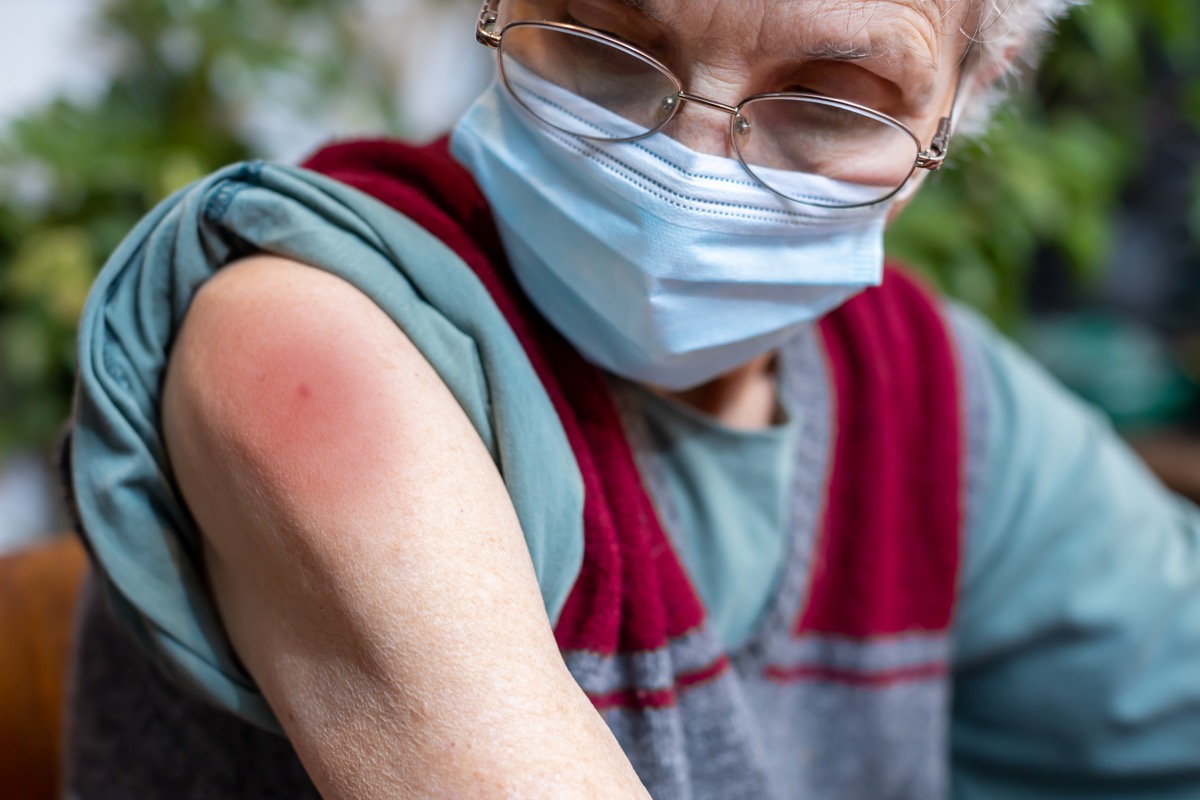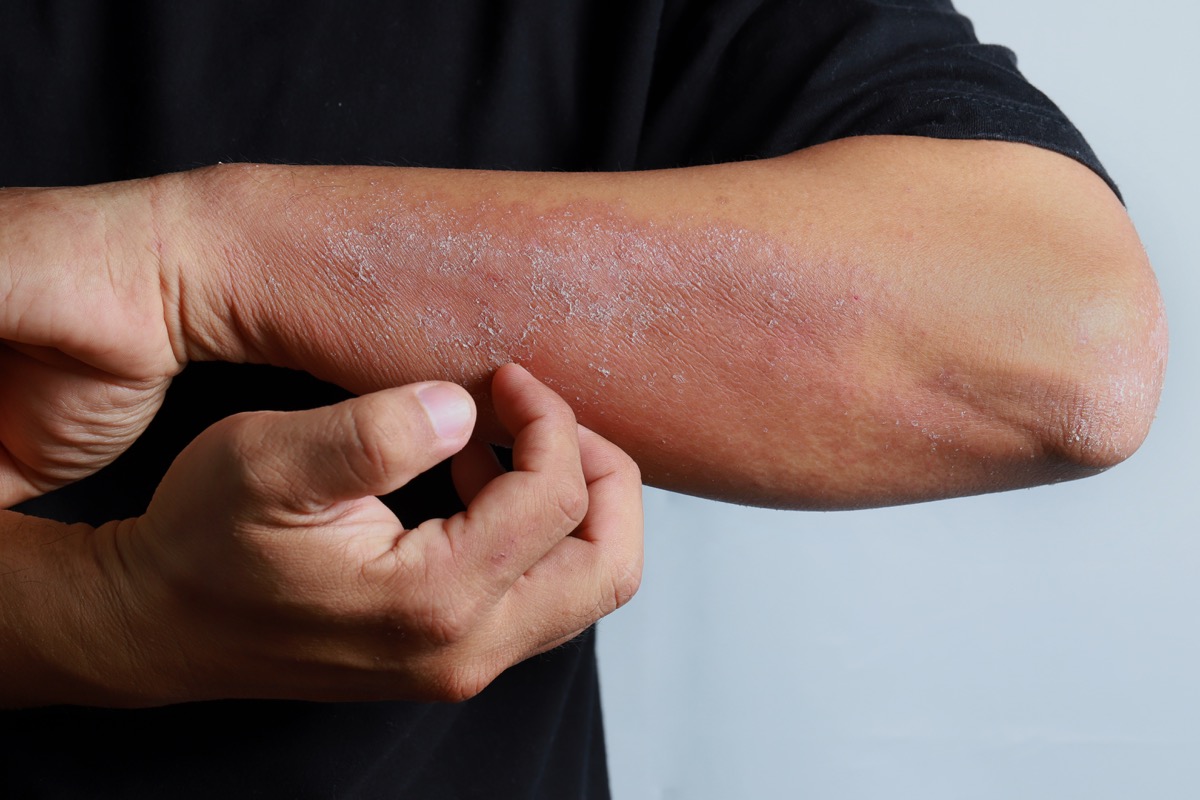The discovery comes from an analysis of 414 delayed skin reactions reported by patients who had received the COVID-19 vaccine, described in the study as starting a day or so after the dose is received to as long as seven to eight days later. Since researchers collected the data between December and February before the Johnson & Johnson vaccine had been approved for use in the U.S., the study included only Pfizer and Moderna recipients, representing 17 percent and 83 percent of the patients considered, respectively. While the analysis found that several rare but non-life-threatening side effects on the skin were possible, researchers noted that skin sores or bumps known as pernio or chilblains—also described as “COVID toes” by some patients—were also reported, USA Today reports. The condition, which was also reported to affect the fingers in 10 percent of patients who saw the symptom, is likely caused by inflammation of blood vessel walls and can cause digits to swell and turn deep red or purple. Fortunately, researchers say reacting to your shots with discolored digits is not a sign that anything is seriously wrong. “Having your toes turn purple is uncomfortable but it’s not a reason to not get the second dose,” Esther Freeman, MD, PhD, director of global health dermatology at Massachusetts General Hospital and senior study author, told USA Today. What other kinds of skin reactions can the COVID-19 vaccine cause? Read on to find out what the analysis uncovered, and for more on why your response to your shots might be so severe, check out This Is Why Half of People Have Stronger Vaccine Side Effects, CDC Says. One of the most commonly reported side effects of the vaccine was a red, itchy rash at the injection site known as “COVID arm” or “Moderna arm,” as 95 percent of cases are reported in patients who receive the company’s vaccine. While this has been previously reported as a side effect, the study did find that only 43 percent of patients who developed a rash on their arm after their first dose saw it again after their second. Those patients who saw the rash with both doses reported that it was less pronounced and usually faded more quickly than the first in about three to four days.ae0fcc31ae342fd3a1346ebb1f342fcb Skin reactions to the COVID vaccine aren’t just limited to where you get your jab. The study found that some patients reported an all-body rash—medically known as a morbilliform rash—often described as being “measles-like” though it isn’t measles. But once again, the seemingly outsized reaction to the vaccine isn’t the sign of anything serious. “People can get full-body rashes, and that can be surprising and a little scary, but these patients did extremely well, recovered, and were able to go back and get their second dose,” said Freeman. “For people whose rashes started four or more hours after getting the vaccine, 0 percent of them went on to get anaphylaxis or any other serious reaction. Zero is a nice number.” And for more on weird ways your body can react to the shots, check out The Strange New COVID Vaccine Side Effect That’s Confusing Even Doctors. Chickenpox is a once-in-a-lifetime illness for most people, but it can come back for some as shingles. This was the case for a few of the patients who reported an outbreak after receiving their shot. The analysis found that patients who had received lip injections experienced some swelling after receiving their dose in rare instances. According to Shilpi Khetarpal, MD, a dermatologist, the reaction isn’t just related to recent procedures, telling Clevland Clinic in February: “I have seen patients who’ve had reactions to the vaccine and their fillers were placed anywhere from weeks to years prior. In one case, one person had a filler placed in 2018 and experienced swelling after receiving the vaccine. So, it appears that it can happen at any point since these fillers can last much longer than we think.” Still, the reaction is a noted side effect of other vaccines as well, and this doesn’t mean you should hold back from getting your shots. “If you’ve had facial filler, it doesn’t mean you shouldn’t get the vaccine,” Freeman said. And for more on what you can expect after you’re fully vaccinated, check out Doctors Are Warning You to “Be Prepared” for This After Your Second Dose.



